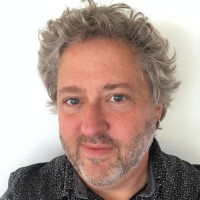VIDEO: Quake 3 Running on Tiny, Little Raspberry Pi
In this video, id Software's classic Quake III Arena is shown maxed out at 1080p resolution via the card-sized Raspberry Pi mini-computer.
For the uninitiated, Raspberry Pi will be a $25 to $35 Linux-based "mini-rig" crammed with a 700 MHz ARM11 SoC, 128 MB or 256 MB of RAM, composite and HDMI video output, USB 2.0 and even an optional integrated 2-port USB hub and 10/100 Ethernet controller – all within a credit card-sized form factor.
Now imagine this little device – which is actually smaller than most smartphones and could easily fit in your pocket – outputting Quake III Arena at 1080p resolution with 4x anti-aliasing enabled, and lighting and geometric details maxed out. As seen in the video demo below, id's classic shooter is churning at a not-too-shabby 20 to 30 FPS which is likely due to a "a floating-point library issue," but Raspberry Pi Foundation trustee Eben Upton claims that he's seen better framerates on other Raspberry Pi builds.
"Obviously, the Raspberry Pi isn’t intended as a gaming platform, but it’s very satisfying to let the Broadcom BCM2835 application processor off the leash (yes, I’m allowed to give you the part number now) and see what it can do in this sphere nonetheless," reads the Raspberry Pi blog.
It was also noted that the card-sized rig didn't show any real signs of overheating when running the demo several times using the high-graphics settings. "We feel you should be fine with the sort of thermoplastic cases that some of you are hoping to make using 3d printers: the chip doing all the work in this clip was still under body temperature after I’d filmed this demo four times, and feels surprisingly cool to the touch," the blog reads. "This is also, of course, great news for power consumption."
Eventually the team wants to demonstrate both its game-playing and networking capabilities in the coming weeks by releasing a new video showing them all playing Quake III Arena Deathmatch on several networked Raspberry Pi devices. In the meantime, the first Q3A tease is embedded below.
Someone is a rocket junkie too...
Get Tom's Hardware's best news and in-depth reviews, straight to your inbox.

Kevin Parrish has over a decade of experience as a writer, editor, and product tester. His work focused on computer hardware, networking equipment, smartphones, tablets, gaming consoles, and other internet-connected devices. His work has appeared in Tom's Hardware, Tom's Guide, Maximum PC, Digital Trends, Android Authority, How-To Geek, Lifewire, and others.
-
amk-aka-Phantom Why not? AFAIK, Quake 3 can run on SGS 1. I ran it on my old Celeron 500 MHz w/ 384MB RAM. It's not a resource hog or something... but a fun shooter for sure. Still nothing like it.Reply -
alidan damn, all i can say.Reply
now that being said, i would love this thing if it can be used as a network device, to stream video to a tv over wifi, would be nice for a cheap device like this to be able output video without all the constraints that are on the current ps3 and 360. -
dalauder You guys make a good point. Something that can run that game doesn't need much of hardware, but the fact that it can be sold for $35 is amazing. It really begs the question: Why these new handheld consoles aren't looking at being handheld media powerhouses?Reply
Can a PS Vita stream my PC's shared media to input on any TV nearby or play plenty of fun games to wireless PS3 controllers? It should.
The price of capable hardware is almost in a freefall the last few years. My family paid $2000 for a midrange laptop in 1999. Now it's $550 for a midrange laptop. Soon it'll be $50 for a handheld that satisfies all my computing needs. -
ProDigit10 I still prefer a little more expensive, but also a little more powerful.Reply
Many complained about the Atom processor, but this is about 1/2 to 1/8th the speed of an Atom processor
-
mattmock I am a bit skeptical about that price. Smartphones with similar power to this still cost way more to build. It is a cool little device though.Reply -
fixxxer113 I played Quake 3 on a PII 400Mhz CPU with an Nvidia TNT 16MB PCI graphics card, with framerates around 70-90... So this is not at all impressive. I think even mobile phones now would run Quake 3 maxed out...Reply
It's natural that nowadays, all that power would fit in a single chip. -
aznshinobi This is defiantly going to be a positive for developing countries. A cheap computer that can do your basic usages, word docs, browsing internet and what not. Certainly not crazy performance, but enough performance. For a low price too!Reply

